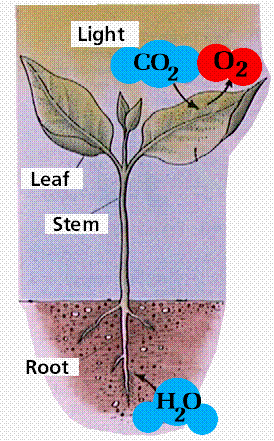Biology
 The transport system enables the rapid delivery of nutrients and O2 to as well as the removal of metabolic waste products (including CO2) from all cells of the body for survival.
The transport system enables the rapid delivery of nutrients and O2 to as well as the removal of metabolic waste products (including CO2) from all cells of the body for survival.
All cells need to take in substances from their environment, and get rid of unwanted substances.
In a single-celled organism, this can happen quickly enough by diffusion alone. This
is because:

In a large organism, diffusion is no longer sufficient. This is because:
- Cellular Transport
Cellular Transport? Sounds like something off of a Syfi movie, doesn't it? But this ladies and gentlemen, is real!There are four different types of Cellular Transport: diffusion, osmosis, facilitated diffusion, and active transport. The purpose...
- #39 Structure Of Transport Tissues In Plants
Plants have 2 transport systems: xylem: transports water and inorganic ions from the roots to the leaves.phloem: transports food made in the plant (sucrose and amino acids) from the leaves to the rest of the plant. Both of...
- # 26 Surface Area To Volume Ratios, Investigating Diffusion
As the radius of a cell ? from 1x to 3x (left), the surface area ? from 1x to 9x, and the volume ? from 1x to 27x. Source: Nature Education As a cell increases in size, there is less surface area in proportion to its volume. Relatively there...
- #23.2 Cell Membranes And Transport - Syllabus 2016
4.1 Fluid mosaic membranes 4.2 Movement of substances into and out of cells The fluid mosaic model introduced in 1972 describes the way in which biological molecules are arranged to form cell membranes. The model has stood the test of...
- #38.1 Transport In Multicellular Plants - Syllabus 2015
? The need for, and functioning of, a transport system in multicellular plants Learning Outcomes Candidates should be able to: (a) explain the need for transport systems in multicellular plants and animals in terms of size and surface area to...
Biology
# 39 The need for transport systems in a multicellular organism

All cells need to take in substances from their environment, and get rid of unwanted substances.
In a single-celled organism, this can happen quickly enough by diffusion alone. This
is because:
- no point in the cell is very far from the surface, so it does not take long for gases to diffuse from the cell surface membrane to the centre of the cell, or vice versa;
- the surface area to volume ratio of the cell is relatively large - that is, it has a large amount of surface area compared to its total volume.

In a large organism, diffusion is no longer sufficient. This is because:
- the centre of the organism may be a long way from the surface, so it would take too long for substances to diffuse all that way;
- the surface area to volume ratio is much smaller - that Is, It has a small amount of surface area compared to its total volume.
- they have transport systems that carry substances by mass flow from one part of the body to another, rather than relying solely on diffusion;
- they increase the surface area of parts of the body involved in exchange with the environment, for example by having thin, flat leaves or by having a highly folded gas exchange surface.
Syllabus 2015 (a) explain the need for transport systems in multicellular plants and animals in terms of size and surface area to volume ratios; |
- Cellular Transport
Cellular Transport? Sounds like something off of a Syfi movie, doesn't it? But this ladies and gentlemen, is real!There are four different types of Cellular Transport: diffusion, osmosis, facilitated diffusion, and active transport. The purpose...
- #39 Structure Of Transport Tissues In Plants
Plants have 2 transport systems: xylem: transports water and inorganic ions from the roots to the leaves.phloem: transports food made in the plant (sucrose and amino acids) from the leaves to the rest of the plant. Both of...
- # 26 Surface Area To Volume Ratios, Investigating Diffusion
As the radius of a cell ? from 1x to 3x (left), the surface area ? from 1x to 9x, and the volume ? from 1x to 27x. Source: Nature Education As a cell increases in size, there is less surface area in proportion to its volume. Relatively there...
- #23.2 Cell Membranes And Transport - Syllabus 2016
4.1 Fluid mosaic membranes 4.2 Movement of substances into and out of cells The fluid mosaic model introduced in 1972 describes the way in which biological molecules are arranged to form cell membranes. The model has stood the test of...
- #38.1 Transport In Multicellular Plants - Syllabus 2015
? The need for, and functioning of, a transport system in multicellular plants Learning Outcomes Candidates should be able to: (a) explain the need for transport systems in multicellular plants and animals in terms of size and surface area to...
